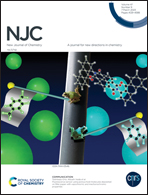A structural spectroscopic study of dissociative anaesthetic methoxphenidine†
Abstract
Methoxphenidine was originally patented for its properties to treat neurotoxic injury. However, due to its side effects, it failed to become a drug and later reappeared on the black market among so-called new psychoactive substances. Methoxphenidine belongs among dissociative anaesthetics, which came to the forefront of medicinal interest due to their potential for depression treatment. Despite its pharmacological history and black market availability, there is still a lack of pharmacological data on this substance and a shortage of methods enabling further biological studies. To offer tools for psychopharmacological studies of the enantiomers of this compound, we have developed a chiral resolution process by crystallization using a natural pool of chiral substances. We further developed a novel analytical method to control the optical purity of the obtained enantiomers using chiral supercritical fluid chromatography, which represents the contemporary green and sustainable method for chiral separation. To determine the absolute configuration of the crystallized enantiomers, we employed a combination of the electronic circular dichroism spectra supported by quantum chemical calculations. Furthermore, to verify our approach, we analysed the sample by single crystal diffraction. We believe that the tools within our work that enable pharmacological studies focused on both enantiomers of methoxphenidine may be useful not only for medicinal chemists but also for the broader scientific community.



 Please wait while we load your content...
Please wait while we load your content...